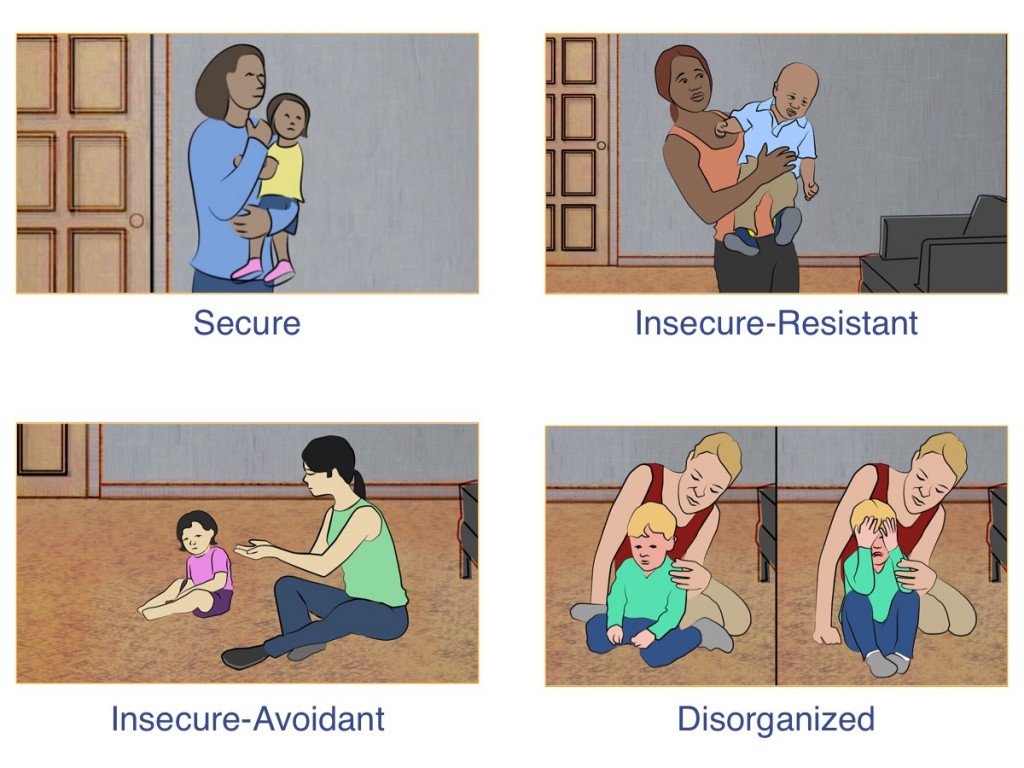
Children who show secure attachment behavior use their parent as a secure base for exploration. They may express distress when their parent leaves. This is because children feel threatened when left alone or with a stranger. During the reunion, children who have a more secure attachment to their caregiver seek contact or proximity with their parent. The parent is able to comfort them. Then they return to play. Children who show more secure behavior are more likely to have caregivers who are sensitive and responsive to them compared to other infants. About 60-65% of infants show secure attachment with their primary caregiver.
A second behavior used by about 20% of infants is insecure-avoidant attachment. During the Strange Situation, these children may engage less with their parent when she is present. They may not show distress when the parent leaves. During reunion, these infants may be slow to greet their parent or not come near her at all. Research shows these infants have an elevated heart rate during separation and reunion. This means that infants feel distress even though they are not acting that way. Children who show avoidant behaviors are more likely to have had their parent consistently reject them. They are also more likely to show avoidant behaviors after a long separation from their caregiver.
Insecure-resistant attachment is an attachment behavior used by about 10-15% of infants. During the Strange Situation, children may cling to their parent. They may fail to explore the new environment. When the parent leaves, resistant children express distress. But, during reunion they resist their parent’s comfort. They may also show anger toward their parent. These children are more likely to have their parent respond to them only some of the time.
A small number of infants show brief instances of other behaviors during the Strange Situation. These behaviors receive a secondary classification called disorganized attachment. These children may show confused behaviors especially during the reunion. Their emotional display may be flat and depressed. Or they may show unexpected bursts of both anger and distress. This attachment behavior is associated with more risk for long-term problems. It is associated with abuse or neglect. But researchers have also observed it in children from stable homes.
In the next section, we will discuss how caregivers influence children’s quality of attachment.
-
- Interactional synchrony
- caregivers and infants respond to each other in a reciprocal and rhythmic manner